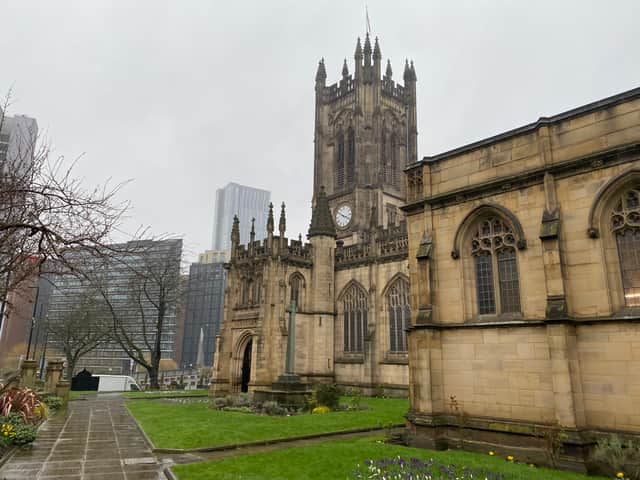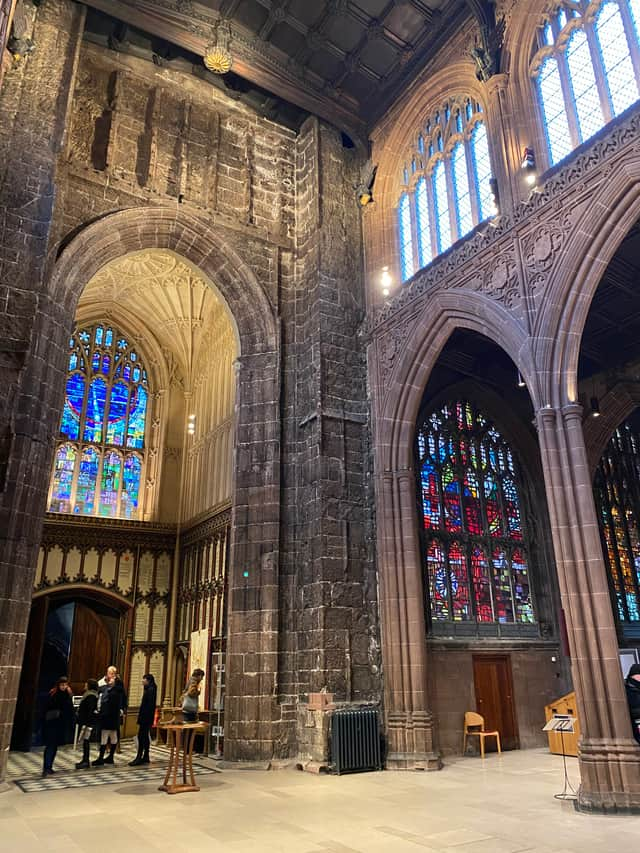I took a walk around iconic Manchester landmark and it was the perfect refuge from the bustling city
and live on Freeview channel 276
Landmarks in Manchester are hardly few and far between, with structures old and new being features of the skyline. History is often hidden around corners in the city, and some of Manchester’s oldest buildings are sometimes overlooked by new developments.
One that could well fit into this category is Manchester Cathedral. Despite not being up there with the more grand, large scale cathedrals in the UK, Manchester’s has plenty of charm and has kept alive a history that has been tested throughout the centuries.
Advertisement
Hide AdAdvertisement
Hide AdOn what was a thoroughly drizzly, cold day, I went along to the cathedral to take it in during a quieter period of the week. Shortly before evening prayer began, I ended up seeking refuge from the increasingly heavy rain.


Against a backdrop of pubs, restaurants, the Arndale Centre and high-rise buildings, the cathedral stands out in more ways than one. Construction on this building began in 1441, barely 70 years after Flemish weavers introduced the textile industry to the region, and the city has maintained much of the origins of it over the years.
The cathedral is home to many stained glass windows which, even in the February gloom, seemed to cast coloured rays on those of us exploring the inner workings of the building. The cathedral has a timeline going around one side which depicts the rich history of the building, through dozens of monarchs and societal changes, from the early times right through to the modern day.
Whilst taking them all in, I came across a plaque which mentioned how all of the windows were fitted during the Second World War. The cathedral was damaged during the Manchester Blitz of 1940, and as a result the new windows mostly date from the 20th century. The cathedral has survived the Blitz and the IRA bombing of Manchester in 1996, meaning that its story can go on.
Advertisement
Hide AdAdvertisement
Hide AdI got a great sense of peacefulness when spending time in the cathedral, and not just because it was a welcome break from the rain. A place of historical significance, it has stood the test of time and a clear plan for its future is in motion as information points around the building tell you.


A key feature of any cathedral is its organ, and I soon realised that Manchester Cathedral is no different. Organ music has helped people to worship at the cathedral for centuries, with the current instrument being a very recent addition. The £2.5 million organ has been in place since 2017. The vast array of pipes captures your eye when making your way around the cathedral, and it is sure to be a key part of the coming years.
Manchester Cathedral has managed to maintain a solemn appearance and has its place amongst the various modern structures of the city. It has a quaint nature to it, and one that - if you look past the Arndale and perhaps the cool cricket bar which sits behind it - will make you feel like you’ve escaped the flurry of city life in 2024.
Throughout its existence, Manchester has grown from a quiet medieval town and into an industrial powerhouse. In the 21st century Manchester is defining itself in other ways, but the cathedral has been a constant for six centuries - I can be pretty confident in saying that it will remain this way for many more to come, no matter how much the city changes around it.
Comment Guidelines
National World encourages reader discussion on our stories. User feedback, insights and back-and-forth exchanges add a rich layer of context to reporting. Please review our Community Guidelines before commenting.
